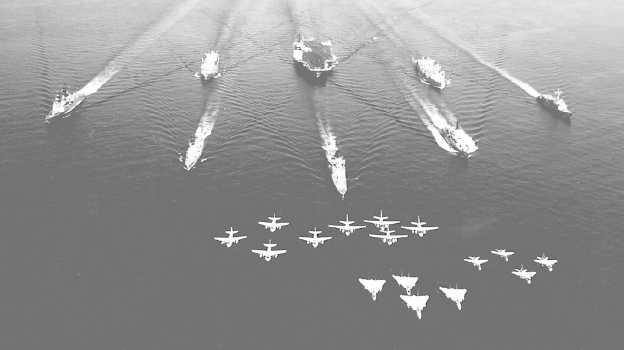STRATEGIC NUCLEAR
DETERRENCE
Today, the United States’ deterrent to the
Soviet Union’s threatening array of nuclear capa-
bilities is a TRIAD of strategic nuclear forces.
These forces consist of BALLISTIC MISSILES,
INTERCONTINENTAL BALLISTIC MISSILES
(ICBMs) and LONG-RANGE BOMBERS.
The unique qualities of each leg of the TRIAD
combined provide a level of flexibility that cannot
be attained by each alone. The TRIAD enhances
our employment options and complicates enemy
defensive and offensive planning. It serves as a
hedge against possible violations of arms control
limitations and reduces the impact of new
technological advances. The U.S. Air Force, with
its long-range bombers and ICBMs, and the U.S.
Navy, with its sea-launched ballistic missiles,
provide part of the TRIAD.
U.S. AIR FORCE ROLE
Our
land-based
intercontinental
ballistic
missiles are unsurpassed in readiness and
immediate reaction capability. They can be
launched quickly, and their capability to survive is
very high. The Strategic Air Command’s (SAC)
intercontinental ballistic missile force consists of
Minuteman missiles and Peacekeeper ICBMs,
which are deployed in Minuteman silos. SAC’s
manned bombers are the most flexible element of
the TRIAD. SAC can use bombers as a manned
penetration, as a cruise missile launch platform,
or in support of conventional operations. It can use
B-52 G/H and B-1B bombers to penetrate defenses.
U.S. NAVY ROLE
Deterrence of war has been the sole mission
and basic reason for the existence of the fleet
ballistic missile submarine since its inception in
1960. The submarine program is the Navy’s
highest priority program. As an essential
cornerstone of the national security policy, this
program functions as a survivable and dependable
leg of the strategic deterrent TRIAD. The
submarine leg of TRIAD consists of older fleet
ballistic missile submarines (nuclear propulsion)
(SSBNs) armed with Poseidon C-3 or Trident C-4
missiles and new Trident submarines carrying
Trident C-4 missiles. Remaining at sea about 55
percent of the time, these submarines have their
missiles targeted at sites in the Soviet Union and
Eastern Europe. Tridents carry 24 submarine-
launched ballistic missiles (SLBMs) compared
with 16 in earlier submarines. The United States
now has 20 Trident submarines scheduled for
construction.
The carrier task group, and essential element of power projection.
1-3


